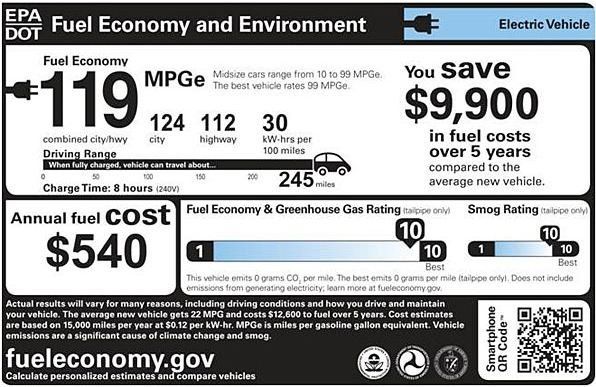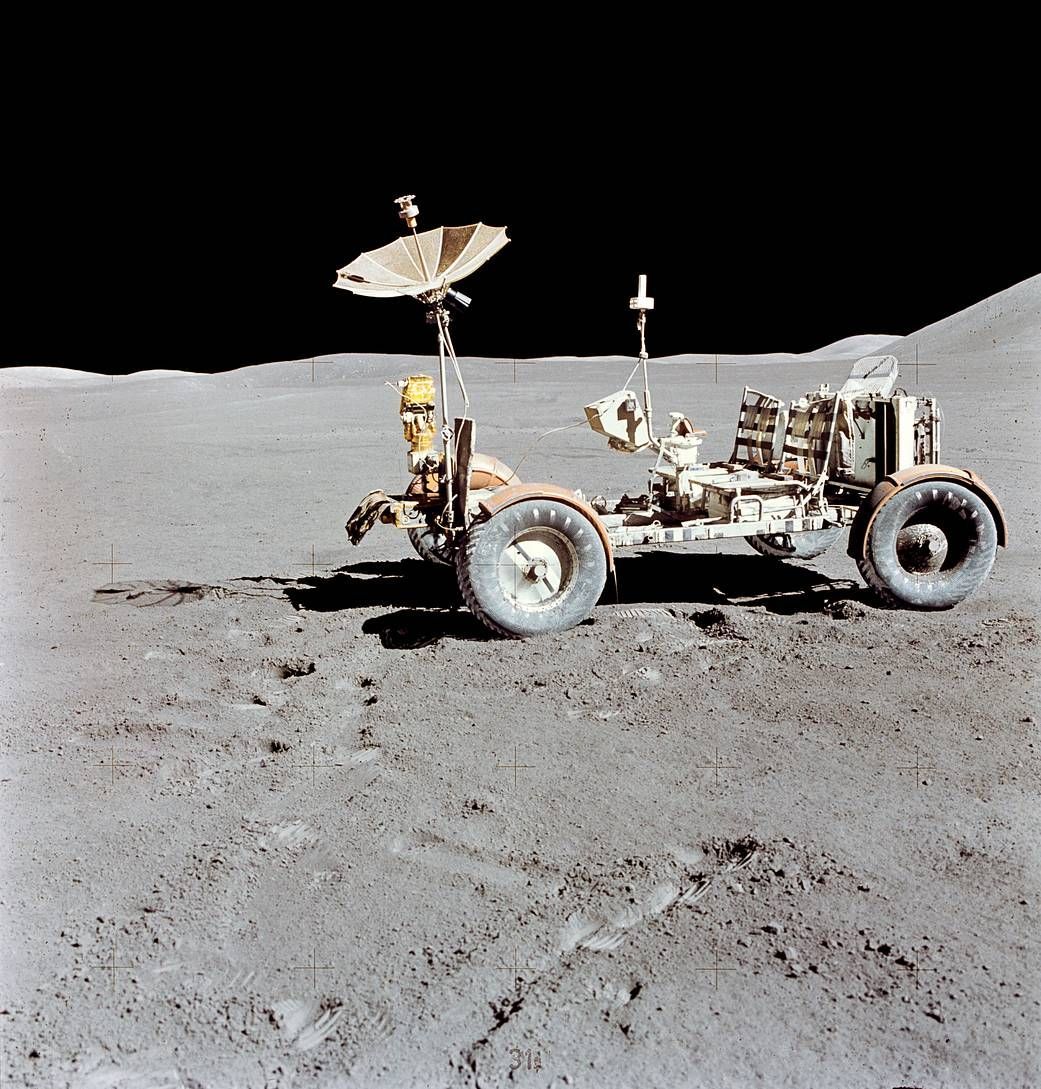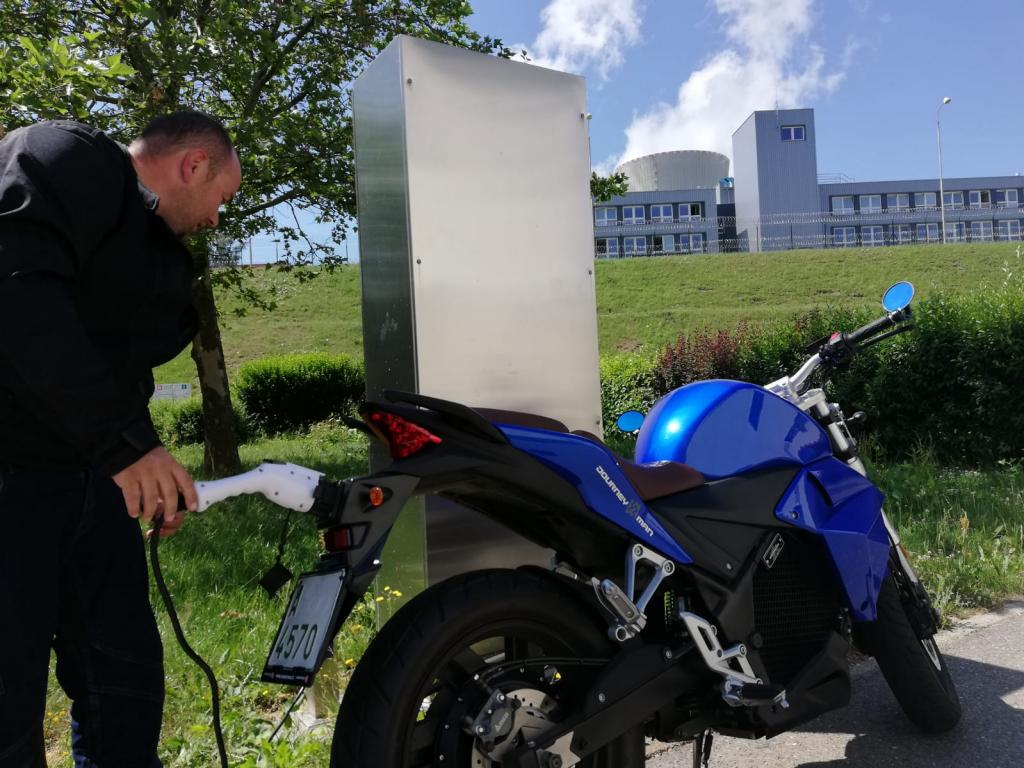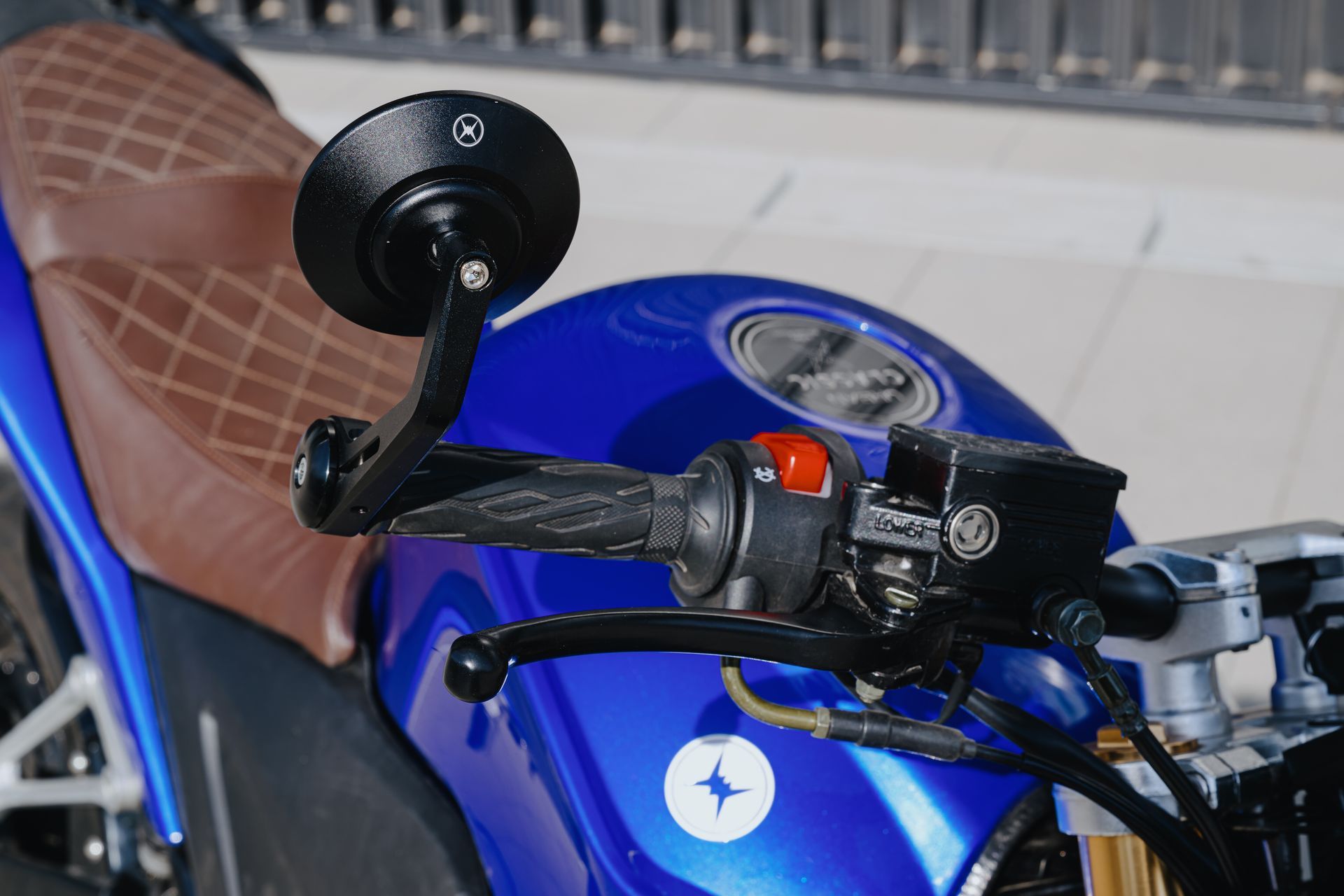How to Calculate Range on an Electric Motorcycle
August 20, 2021
If you've ever wondered how manufacturers calculate and estimate range, read on to find out how.
Part 1 of 3.
Range estimations on the sticker of the new Tesla or other electric vehicle seem to baffle a lot of people, and with a bit of basic math, you'll see how close, or how far, manufacturers can push their range estimations to "look good" on marketing.
There are a few different ways to estimate your range:
On this post, we'll talk about how to utilize the MPGe statistic on most electric vehicles to understand its efficiency and use that to estimate off of theorical battery pack capacities provided from the manufacturer.
MPGe The first metric you'll need to understand how range is calculated is your electric vehicle's efficiency. Efficiency is measured in watt-hours per km, or more commonly written as wh/km. This means that for each kilometer traveled, your electric vehicle will, on average, consume xx watt hours of the battery pack. You will also see all manufactures listing the total capacity of the battery pack, measured in watt hours, and due to their large sizes, mostly listed in kilowatt hours, or kwh.
Most 4 wheel electric cars will see efficiency numbers of 130 wh/km to 250 wh/km, while most full speed electric motorcycles like the Urban Classic will see 30 wh/km to 60 wh/km. From this metric alone, you can see that 2 wheeled electric motorcycles will consume less battery capacity for each km traveled, meaning they're more efficient that electric cars. You can easily convert this metric to miles by multiplying by 1.6 to get wh/mile, which will be required to get your eMPG. Now it's a simple conversion to calcuate your efficiency numbers to an equivalent MPG format.
Bluegrassauto.com quotes:
The Environmental Protection Agency (EPA) uses an established energy standard of 115,000 BTUs (British thermal units) per gallon of gasoline. Simplified, this means that if you ignited 1 U.S. gallon of unleaded gasoline, it would generate that much heat. To create that same amount of heat, 33.7 kilowatt-hours of electricity would be required. Thus, 1 gallon of gasoline generates the same ‘heat energy’ as 33.7 kilowatt-hours of electricity.
If an electric vehicle is able to travel 100 miles on 33.7 kWh of electricity (the energy equivalent of 1 gallon of gasoline), it would be rated with an MPG equivalency of 100 MPGe. Let’s say a different electric car can travel that same 100 miles while using 32 kWh, slightly less than the previous example. This second electric car would receive a rating of 105 MPGe since it’s more efficient. Just like traditional MPG ratings for a gasoline-powered vehicle, the EPA rates MPGe across city, highway, and combined fuel economy.
So with your efficiency estimate of, for example, 30 wh/km, you will need to convert that to wh/mile by multiplying by 1.6 and get 48wh/mile. To convert to eMPG, you'll need to calcuate your consumption of 100 miles, so multiply by 100, to get 4800 wh per 100 miles, or 4.8 kwh per 100 miles. The EPA rates 100 miles of travel utilizing 33.7 kwh as 100 MPGe, so the 30 wh/km electric motorcycles would be 7.02x more efficient, giving an MPG equivalent of 702 MPGe.
The above exercise is mainly working backwards, and if a manufacturer gives you the MPGe, you can calculate efficiency. Then to get estimated range, you would need to take the total capacity of the vehicle and divide by the efficiency to get an estimated total range of the vehicle.
For e.g. if the electric motorcycle has a 10 kwh battery, or 10,000 wh, divided by 30 wh/km gives you a total of 333.3 km of total range, or 208 miles.
Follow along with our upcoming blog posts to see how to calculate and estimate range using the wall to wheel method and utilizing historical "on-the-fly" calcuations.
There are a few different ways to estimate your range:
- MPGe
- Wall to wheels
- Historical "on-the-fly" algorithm
On this post, we'll talk about how to utilize the MPGe statistic on most electric vehicles to understand its efficiency and use that to estimate off of theorical battery pack capacities provided from the manufacturer.
MPGe The first metric you'll need to understand how range is calculated is your electric vehicle's efficiency. Efficiency is measured in watt-hours per km, or more commonly written as wh/km. This means that for each kilometer traveled, your electric vehicle will, on average, consume xx watt hours of the battery pack. You will also see all manufactures listing the total capacity of the battery pack, measured in watt hours, and due to their large sizes, mostly listed in kilowatt hours, or kwh.
Most 4 wheel electric cars will see efficiency numbers of 130 wh/km to 250 wh/km, while most full speed electric motorcycles like the Urban Classic will see 30 wh/km to 60 wh/km. From this metric alone, you can see that 2 wheeled electric motorcycles will consume less battery capacity for each km traveled, meaning they're more efficient that electric cars. You can easily convert this metric to miles by multiplying by 1.6 to get wh/mile, which will be required to get your eMPG. Now it's a simple conversion to calcuate your efficiency numbers to an equivalent MPG format.
Bluegrassauto.com quotes:
The Environmental Protection Agency (EPA) uses an established energy standard of 115,000 BTUs (British thermal units) per gallon of gasoline. Simplified, this means that if you ignited 1 U.S. gallon of unleaded gasoline, it would generate that much heat. To create that same amount of heat, 33.7 kilowatt-hours of electricity would be required. Thus, 1 gallon of gasoline generates the same ‘heat energy’ as 33.7 kilowatt-hours of electricity.
If an electric vehicle is able to travel 100 miles on 33.7 kWh of electricity (the energy equivalent of 1 gallon of gasoline), it would be rated with an MPG equivalency of 100 MPGe. Let’s say a different electric car can travel that same 100 miles while using 32 kWh, slightly less than the previous example. This second electric car would receive a rating of 105 MPGe since it’s more efficient. Just like traditional MPG ratings for a gasoline-powered vehicle, the EPA rates MPGe across city, highway, and combined fuel economy.
So with your efficiency estimate of, for example, 30 wh/km, you will need to convert that to wh/mile by multiplying by 1.6 and get 48wh/mile. To convert to eMPG, you'll need to calcuate your consumption of 100 miles, so multiply by 100, to get 4800 wh per 100 miles, or 4.8 kwh per 100 miles. The EPA rates 100 miles of travel utilizing 33.7 kwh as 100 MPGe, so the 30 wh/km electric motorcycles would be 7.02x more efficient, giving an MPG equivalent of 702 MPGe.
The above exercise is mainly working backwards, and if a manufacturer gives you the MPGe, you can calculate efficiency. Then to get estimated range, you would need to take the total capacity of the vehicle and divide by the efficiency to get an estimated total range of the vehicle.
For e.g. if the electric motorcycle has a 10 kwh battery, or 10,000 wh, divided by 30 wh/km gives you a total of 333.3 km of total range, or 208 miles.
Follow along with our upcoming blog posts to see how to calculate and estimate range using the wall to wheel method and utilizing historical "on-the-fly" calcuations.
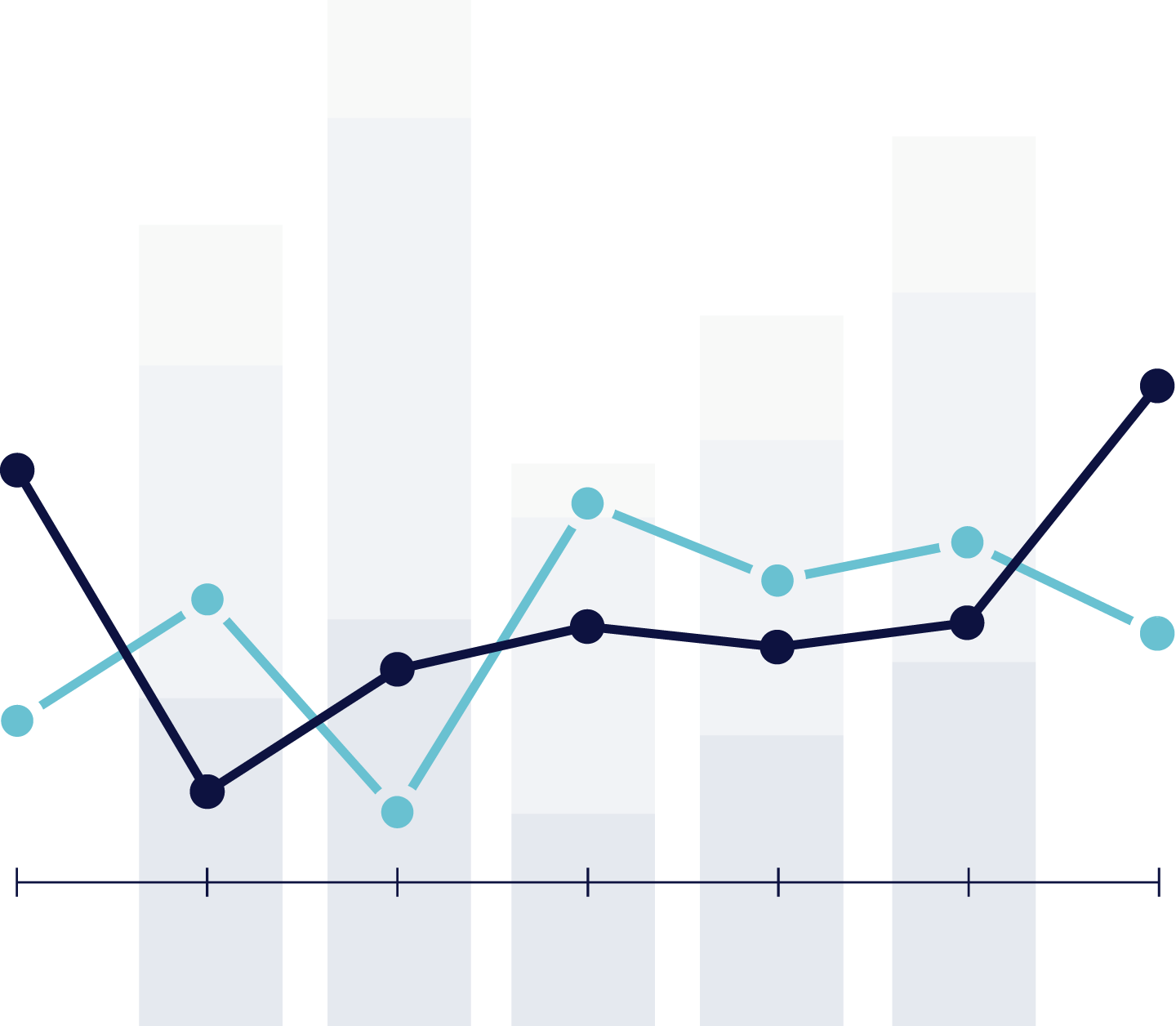
Data logging for electric vehicles offers numerous benefits. Firstly, it enables vehicle owners and enthusiasts to comprehensively analyse and evaluate their vehicle's performance. By recording essential parameters such as engine RPM, speed, throttle position, and braking force, among others, data logging facilitates the identification of areas for improvement, fine-tuning of vehicle settings, and tracking of performance changes over time. Furthermore, data logging serves as a valuable diagnostic and troubleshooting tool, providing crucial information about sensor readings, error codes, and system behaviour during specific events or conditions. This empowers mechanics and vehicle owners to identify problems accurately and make informed decisions regarding repairs or maintenance. For performance enthusiasts, data logging allows customization and optimization of vehicle settings, as continuous monitoring and logging of performance data enable precise fine-tuning of engine parameters, suspension settings, and other components. This approach helps achieve desired performance characteristics while maximizing efficiency. Importantly, data logging contributes to safety by providing insights into driver behaviour and vehicle performance, recording data related to acceleration, braking, speed, and other parameters. This information can be utilized for training purposes, monitoring driving habits, and assessing vehicle performance during critical situations. Thus, data logging proves to be an invaluable tool, offering multifaceted advantages for vehicle owners, enthusiasts, mechanics, and the automotive industry as a whole. When it comes to Evoke Motorcycles, collected data is used for identifying errors and potential areas of improvement in prototypes and other models. If an error or an abnormality comes up in the data, it can be easily noticed and traced to its origin, helping identify the root of the problem. Furthermore, using data brings valuable insights into driver behaviour and its variety. If one behaviour is more prevalent than the other, or there are many, the design or parameters can be manipulated to better suit the driver and make the driving experience much more pleasant and comfortable. In the future, data analytics are planned to be shifted in the hands of AI/ML providing instantaneous criteria and analysis on the go, as the data is being collected. This will fully automate the process and result in much more detailed diagnostics once the AI is sufficiently trained on the past data processes. All of the data is collected and stored within the vehicle, as this surpasses the limitation of servers. If the data is stored within a server in one country, a user in the other might not be able to access it. If the data is stored inside the Evoke motorcycle itself, the user can access it at any point and maintains full control of their own riding data. If there are any issues with the electric motorcycle, or the user would like to understand their riding data better, it can be easily sent to Evoke for review, bypassing any geopolitical limitations that would be otherwise present with the use of servers. The vehicle records up to 10 hours of riding data and is collected every 0.5 seconds. As of 2024, the 120 collected data points make up the five main data pools:

Vehicles, that run with combustion engines or ICEs rely on a jackshaft to efficiently distribute the produced power or simply optimise the conversion of energy to the wheels of the vehicle. ICEs cannot automatically regulate the speed of their rotation. In order to control it, different gears are introduced, to be able to increase and decrease the torque. If the jackshaft is part of a transmission system, it may have multiple gears or pulleys of different sizes attached to it. These gears or pulleys can have different ratios, allowing for torque conversion or speed adjustment. Gear ratio can be calculated via the formula below:
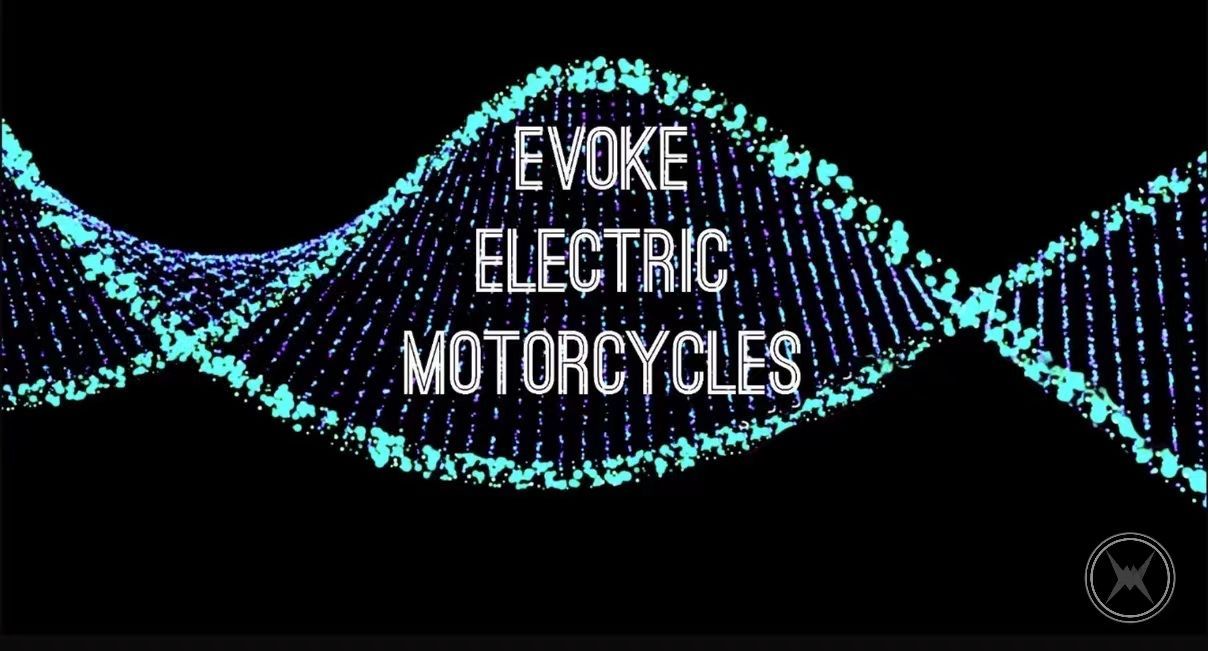
In terms of automotive there may be a handful of principles that determine the overall form and componentry present on a vehicle. Inescapable is physics, aspirational is performance but as another 20th century icon dictated, there's no escaping the bottom line and in manufacturing that means a need to establish and maintain a lean operational footprint.
